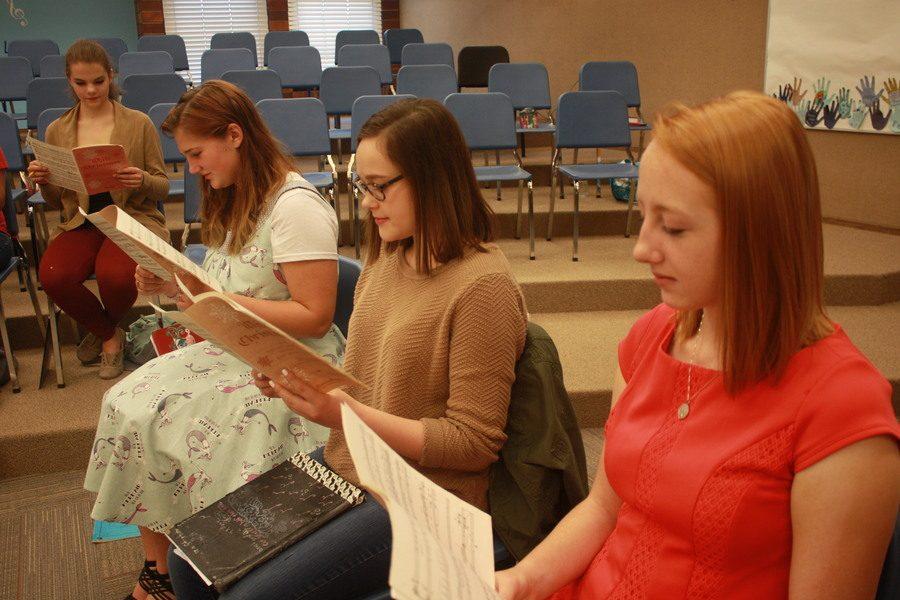Inadequate school chairs threaten student health
October 14, 2016
“Pockets on your chair, feet on the floor, sit up straight,”- it’s a mantra that most high school students have been hearing for the past 12 years. Taylorsville High School students spend somewhere around 300 minutes a day sitting. This breaks down into 88-minute classes, with 4 periods a day for most students. That comes out to nearly 25 hours of sitting in school in a 5-day week.
Now, the question is, how is this affecting the physical health of students? With advancing technology- computers, phones, etc.- posture is always mentioned. However, there’s an absence of knowledge on the effects of sitting for long periods of time, specifically during school.
First of all, the human spine has natural curves in it. A normal spine is usually “S” shaped.
“The spine’s curves work like a coiled spring to absorb shock, maintain balance, and to facilitate the full range of motion throughout the spinal column,” according to the Mayfield Spine and Brain
Clinic. To prevent back pain or injury, Mayfield Clinic advises, “Using correct posture and keeping your spine in alignment are the most important things you can do for your back.” Now there’s that funny word “posture” again. Posture is simply how you hold your body against gravity while sitting, standing, lying down, etc. Proper posture is extremely important to our health.
“Proper posture helps decrease the abnormal wearing of joint surfaces that could result in arthritis, prevents fatigue, and prevents backache and muscular pain,” according to the Cleveland Clinic. Proper posture is clearly important, but is it achievable in a school setting? The Cleveland Clinic provides some guidelines for good posture: “Sit up with your back straight and your shoulders back. Your buttocks should touch the back of your chair. Distribute your weight evenly on both hips. Keep your feet flat on the floor. Try to avoid sitting in the same position for more than 30 minutes.”
A common stereotype of teenagers is that they are often slouching in their chairs. While there may be truth in this statement, proper posture is not always easily achievable in a school setting.
One aspect of good posture includes keeping your back flat against the back of your chair. However, that is impossible to maintain when your chair does not have a back. Some classrooms at Taylorsville have backless stools. For example, Mr. Olsen’s physics lab has only tables and high stools. Stools like these, also found in welding and sewing classrooms, make proper posture extremely difficult to achieve.
Another aspect of proper posture that’s difficult to have in a school setting is keeping your feet flat on the floor. This straightens your spine and is important to your posture. It seems like something that teenagers are just too stubborn to do; they’d rather cross their legs or stretch them out. The catch is that some people can’t reach the floor. When put to the test, students from approximately 5’ to 5”4” were often unable to touch the floor while sitting all the way back (the recommendation) in the standard classroom chairs.
Most professionals will suggest that you adjust your chair so that you can touch the floor, but that isn’t possible with classroom chairs.
The final recommendation from professionals that is difficult to accomplish while in school is to avoid sitting in the same position for more than 30 minutes. As mentioned earlier, Taylorsville has 88-minute classes. While some teachers try to get students up and moving with activities or something as simple as grabbing a Chromebook, that isn’t always possible. There are often classes that run the entire way through and students aren’t allowed to get up and move unless it’s some kind of emergency. Research has shown that sitting for longer than 30 minutes at a time does not facilitate proper posture.
While it’s clear that maintaining proper posture is difficult in a school setting, there are some things you can do to help.
“A small, rolled-up towel or a lumbar roll can be used to help you maintain the normal curves in your back,” according to Mayfield Clinic. “When you’re not using a back support or lumbar roll, sit at the end of your chair and slouch completely. Draw yourself up and accentuate the curve of your back as far as possible. Hold for a few seconds. Release the position slightly (about 10 degrees).”
Whether bad posture is a problem caused by students themselves, or a school setting, it is a problem. However, it is an issue that can be worked around. Maybe posture isn’t really something to get bent out of shape about.















